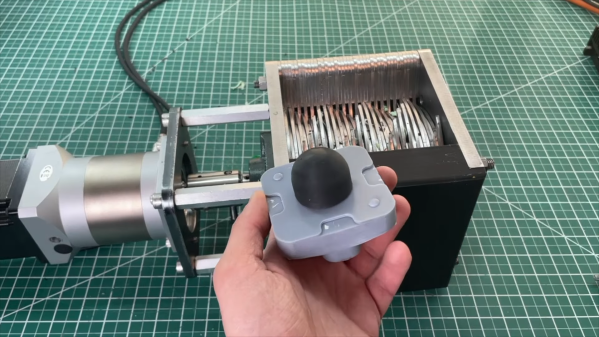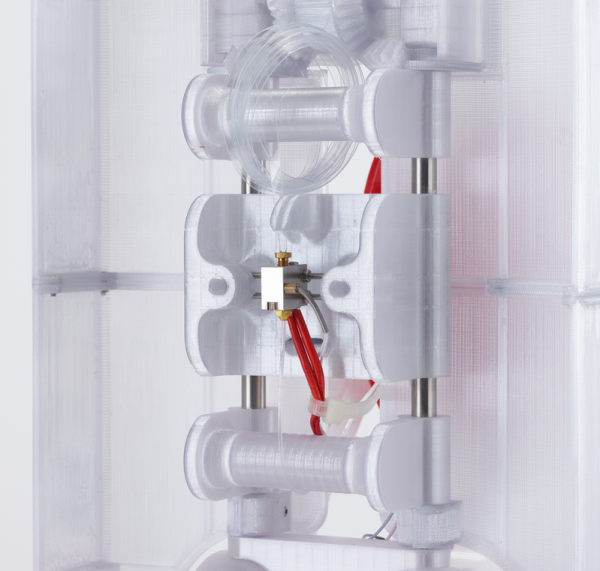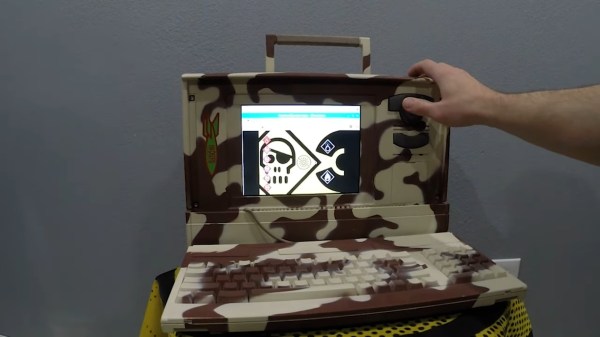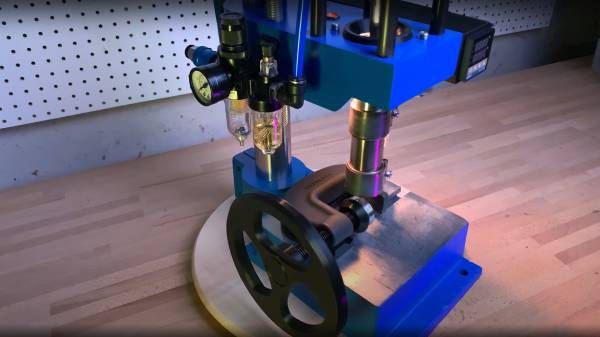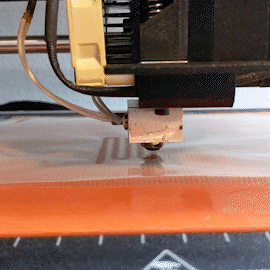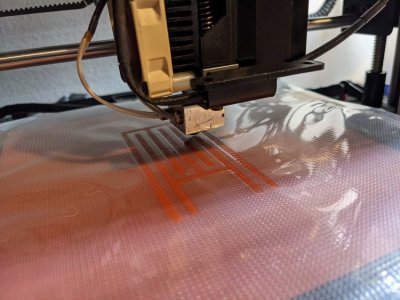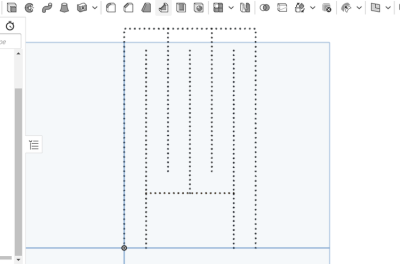We’ve all likely seen video of the enormous industrial shredders that eat engine blocks for lunch and spit out a stream of fine metal chips. The raw power of these metal-munching monsters is truly fearsome, and they appear to be the inspiration for SHREDII, the miniature plastic shredder for at-home recycling of plastic waste.
The fact that SHREDII isn’t all that large doesn’t make it any less dangerous, at least to things smaller and softer than engine blocks, like say fingers. The core of the shredder is a hexagonal axle carrying multiple laser-cut, sheet steel blades. The rotating blades are spaced out along the axle so they nest between a bed of stationary blades; rotating the common axle produces the shearing and cutting action needed to shred plastic.
On version one of the shredder, each blade had two hooked teeth, and the whole cutting head was made from relatively thick steel. When driven by a NEMA 34 stepper — an admittedly odd choice but it’s what they could get quickly — through a 50:1 planetary gearbox, the shredder certainly did the business. The shreds were a little too chunky, though, so version two used thinner steel for the blades and gave the rotary blades more teeth. The difference was substantial — much finer shreds that were suitable for INJEKTO, their homebrew direct-feed injection molding machine.
There’s a lot to be said for closing the loop on plastics used in desktop manufacturing processes, and the team of SHREDII and INJEKTO stands to help the home gamer effectively reuse plastic waste. And while that’s all to the good, let’s face it — the oddly satisfying experience of watching a shredder like this chew through plastic like it isn’t even there is plenty of reason to build something like this.
Continue reading “Vicious Little Desktop Shredder Pulverizes Plastic Waste”

